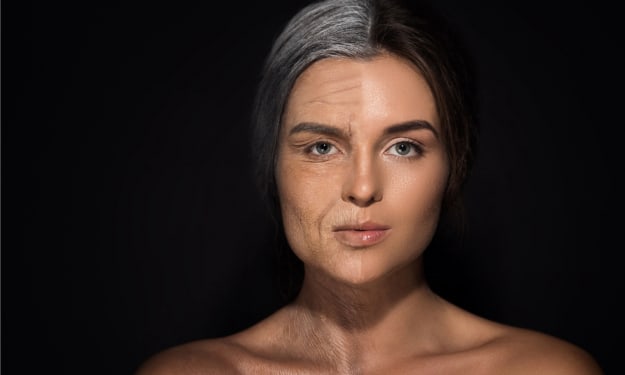Combating Malnutrition in Older Adults
Beyond the Dinner Plate

Many elders face a battle that often happens behind closed doors and in unseen corners. People outside medical circles and caregiver groups talk about this battle less. It is the pervasive issue of malnutrition among older adults. It may lack the urgency of youth or the appeal of tech, but it's a topic that's important to our shared humanity.
I'm a writer who loves everyday life's unexplored nooks and crannies.
I've always been drawn to stories that someone waits to tell.
I've always been drawn to stories. They await someone to tell them.
Malnutrition in older adults is one such story. It's ripe with complexity, full of emotion, and full of potential for change. Through this, we go beyond changing diets. We explore the many challenges and solutions to fighting malnutrition among older people.
Malnutrition is a lack of energy and nutrients. It can come from a deficiency, excess, or imbalance. It often goes unnoticed among older adults and is mistaken for a natural part of aging. The causes are diverse. They range from changes and health issues to loneliness and money problems. The consequences are dire:
-Weakened immunity
-Deteriorated muscle strength
-Increased vulnerability to chronic diseases
-Diminished quality of life
-The culinary adventure begins.
Combating malnutrition requires many approaches. Each must fit the unique needs and circumstances of the individual. At its heart, it is an act of empathy. Each nutritional statistic represents a person. And that person has a story, preferences, and dreams. One innovative approach is integrating culinary adventures into the diets of older adults. This idea goes beyond providing meals. It creates an engaging sensory experience. It brings back the joy of eating. The classes adapt traditional recipes to fit nutritional needs. Community gardens provide fresh, accessible produce. The aim is to make nutrition a celebration of culture and life.
The science behind fighting malnutrition is strong. It advocates for a balanced diet. This diet has many fruits, vegetables, lean proteins, and whole grains. Yet, it's the application of this science that demands creativity. Dietitians develop personalized nutrition plans. They can address specific dietary needs. They also accommodate personal tastes and dietary restrictions.
Also, technology's role is to check nutritional intake and offer tailored dietary suggestions. This role presents a promising frontier. A simple app can analyze your nutrition and suggest meals. It can also connect you with local cooking classes or food delivery services that meet your diet.
Beyond the plate, fighting malnutrition in older adults requires help. This help must come from healthcare professionals, family, and community groups. It's about creating environments that encourage social dining. They offer rides to grocery stores or food banks. And they foster an atmosphere where older adults feel valued and heard.
I've reflected on my relationship with nutrition. I was a curious child in the kitchen. Now, I'm an adult exploring the links between food and health. I've seen the impact of our food choices on our well-being. I have seen my grandparents face the challenges of aging. This includes their battles with malnutrition. It has only made me more resolved to advocate for this cause.
One key aspect is often overlooked in discussions of malnutrition. It is the influence of culture on food preferences and habits. Food is a vessel for history, tradition, and identity. For many older adults, the dishes of their youth are not meals. They are memories incarnate. The dishes bring back times of joy, old communities, and forgotten sensations. Adding these dishes to meal planning can bridge the gap. You need nutrition and still want to enjoy eating. Adjust them as needed for health. It's an acknowledgment that feeding the body can also feed the soul.
Combating malnutrition offers a unique opportunity to foster intergenerational connections. These programs pair older adults with younger volunteers. They do it for meal prep and sharing. The programs can serve many purposes. They can be educational. They teach younger people valuable cooking and nutrition skills. They also give older adults companionship and a sense of continuity. These connections can reduce the isolation of aging. They can also contribute to malnutrition. They remind us that at the dining table, we share more than food; we share stories, wisdom, and a piece of ourselves.
The future of fighting malnutrition in older adults holds promise. This is thanks to the rise of personalized nutrition technology. Bright kitchens have devices. They can recommend recipes based on health data. They help with meal preparation with voice-guided instructions. They can also alert caregivers to possible nutritional deficiencies. These innovations can help older adults maintain their proper nutrition. They can do it with more freedom and precision. They offer a future. In it, malnutrition is not an unavoidable part of aging. Instead, it is a challenge to overcome.

About the Creator
Charlene Ann Mildred Barroga
I'm a writer and content creator who loves to share tips on how to maximize your productivity and get the most out of your day. I






Comments (1)
It was so nostalgic for me to read this because this was one of the chapters of one of the subjects I took in university during my Degree! You've written this so well!